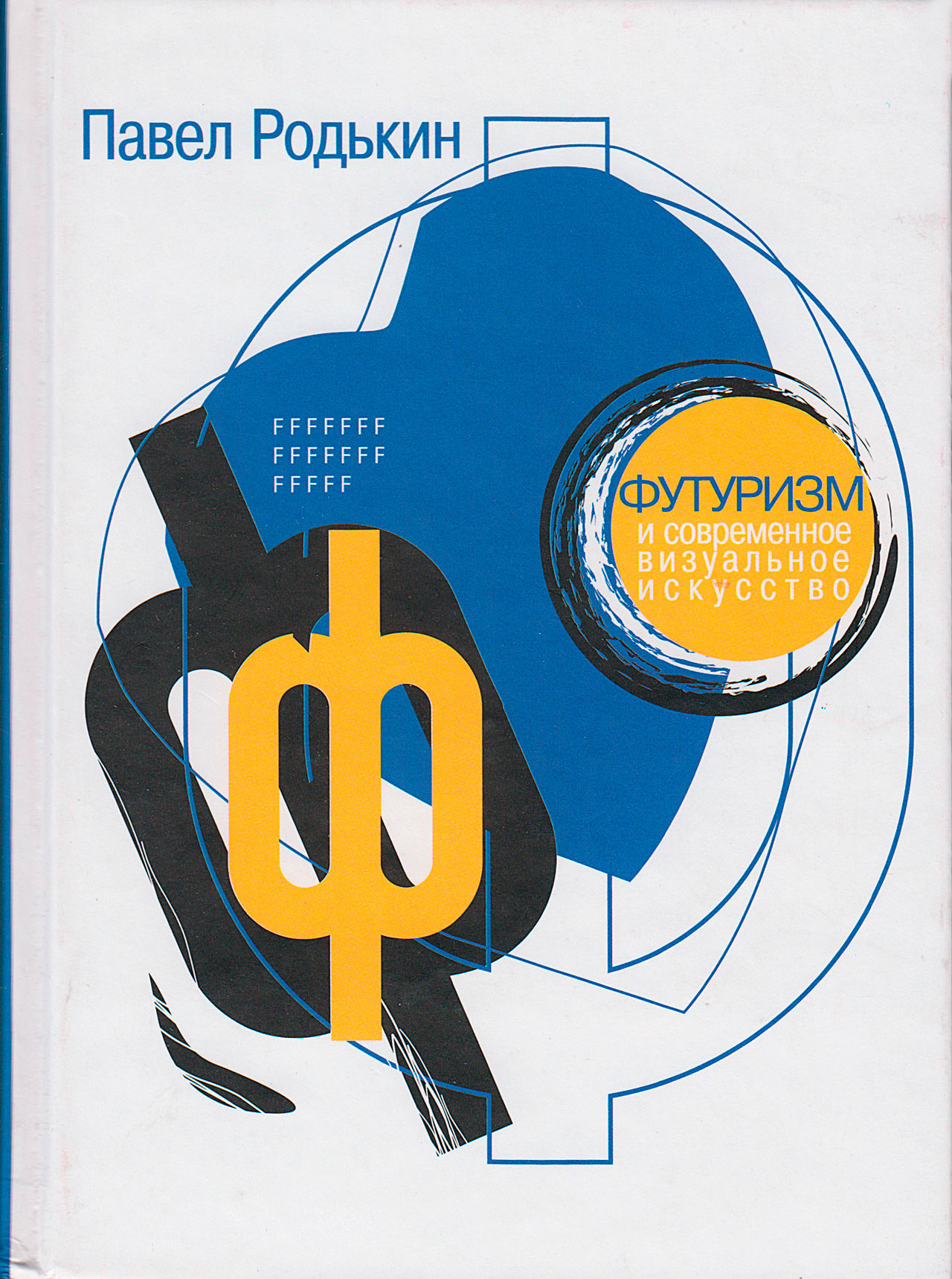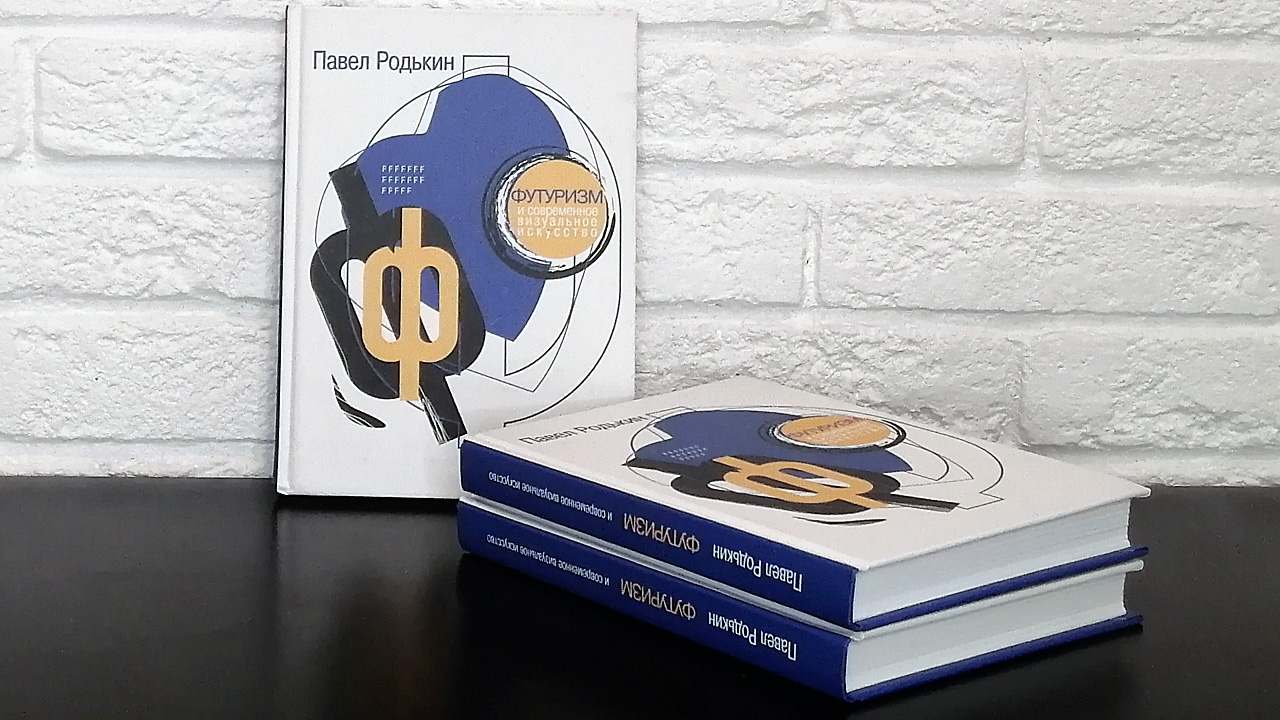

Rodkin, P. (2006). Futurism and Modern Visual Art. Moscow: Sovpadenie. 256 p. (In Russ.). [Rod'kin, P. (2006). Futurizm i sovremennoe vizual'noe iskusstvo. Moskva: Sovpadenie.].
The new work of a young art critic, designer, author of several books on the theory of visual communication examines the cultural and artistic significance of Russian futurism for contemporary visual art and graphic design. The book is addressed to designers, cultural experts and anyone interested in the history of futurism.
Language: Russian
Design: Pavel Rodkin
Hard cover: 256 pages
Size: 125x170 mm.
ISBN 5903060315
© Rodkin, P., 2006
© Publishing house "Sovpadenie", 2006
Introduction
The problem of literary text and language in futurism and contemporary visual art
Typography: The writing phenomenon
Typography of Russian Futurism
New wave typography
Artist's book: from avant-garde to postmodernism with no right of return
Revolution that never happened (Instead of a conclusion)
Bibliography
Illustrations

The fertile cultural layer raised by the modernists is still bearing fruit. The figures of the founders of the movement have become "bronzed", sometimes their spontaneous creations are perceived as the height of academicism, furious manifestos are dismantled into quotations, pen tests are studied by the tenth generation of students. Moreover, all this is true in relation to the openly left, shocking trends in art, for example, futurism. But here's the paradox: if the authority of, say, Filippo Tommaso Marinetti is perceived unconditionally in the world, then how many Western critics will remember today the names of Russians — the sullen Burliuk brothers, the frantic Alexei Kruchenykh, the unpredictable Vasily Kamensky, the brilliant Velimir Khlebnikov? Of course, the artistic work of Malevich, Lissitzky, Rozanova, Zdanevich (namely, these outstanding masters often illustrated the books of futurist poets) is widely known both in Russia and abroad, in a sense it has become an icon of style. However, art, which is on the verge of visual and verbal, has not yet been fully studied.
It is this gap that is filled in by Pavel Rodkin's richly illustrated monograph, devoted to a large extent to the analysis of the historical and cultural heritage of Futurism, in particular the influence of the ideas of the Russians on the "new wave", postmodernism, pop art, trash art, etc. And this influence is huge. The processes of re-semantisation and dissimilation of the text started by the futurists, its transformation into an accident, the discovery of the deep sources of the word are reflected in today's culture. If it weren't for futurism and Suprematism, would Voznesensky's videos, Kushner's "painted" verses, see the light? Would we have met the "color-geometric" brilliant confusion of Friedensreich Hundertwasser? It is no coincidence that the typographic and design techniques of futurists are successfully used in today's printing, advertising and visual arts.
Andrey Chirkov
This book attempts to "examine the cultural and artistic significance of Russian futurism for contemporary visual art and to compare the futurist heritage with the work in the field of modern typography and graphic design". Futurist typography is a topic as exciting as it is poorly developed. A number of problems, such as color in the typography of futurists, or typography in futuristic painting, are still waiting for their researchers, but are already cursorily designated as promising directions in the reviewed book.
The comparison of the typographic achievements of Russian futurism (perhaps the most important of them belong to Vasily Kamensky and Ilya Zdanevich) and modern visual art is a separate interesting task. The finds of the period of the "storm and onslaught" of the Russian avant-garde have entered the flesh and blood of modern design, but it is hardly possible to say that they have long been surpassed. So, the posters of the futuristic performances of 1914 are dizzyingly provocative just by the typographic presentation (not to mention the content), and there are not so many modern samples, products of the "digital revolution", that look competitive next to the inspired hooliganism of almost a century ago...
In it, as in the previous ones, the theorist and the practitioner are united in one person, because the design and layout of the book is the work of the author himself. At the same time, there is no "design" frenzy: everything is built on two fonts and three pins. Attractive pragmatic, but non-trivial layout: align the lines on the left edge; the headings of the sections made at wing half titles; in parallel the author's text quotes are filed in the fields as marginalia (page of such quotations marked stingy decorative — drop folio is given to invert the black die). The text on the strip is either a solid array, or it is divided into two narrow columns. The font is large. The format is pocket-sized. The book is solid and-a good book, Necessary, timely.
Andrey Rossomakhin. NoMI Novy mir iskusstva, No. 2. 2007.